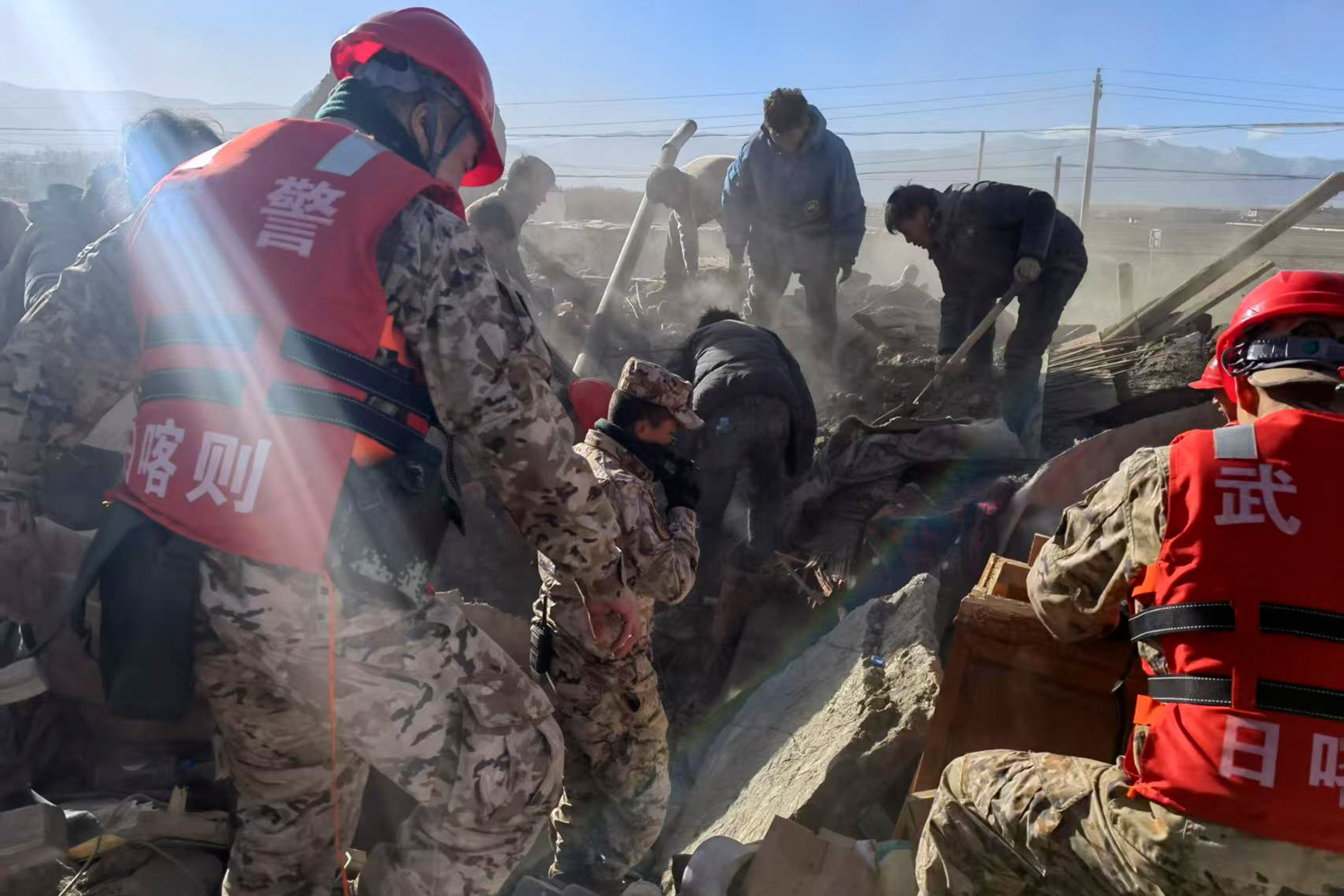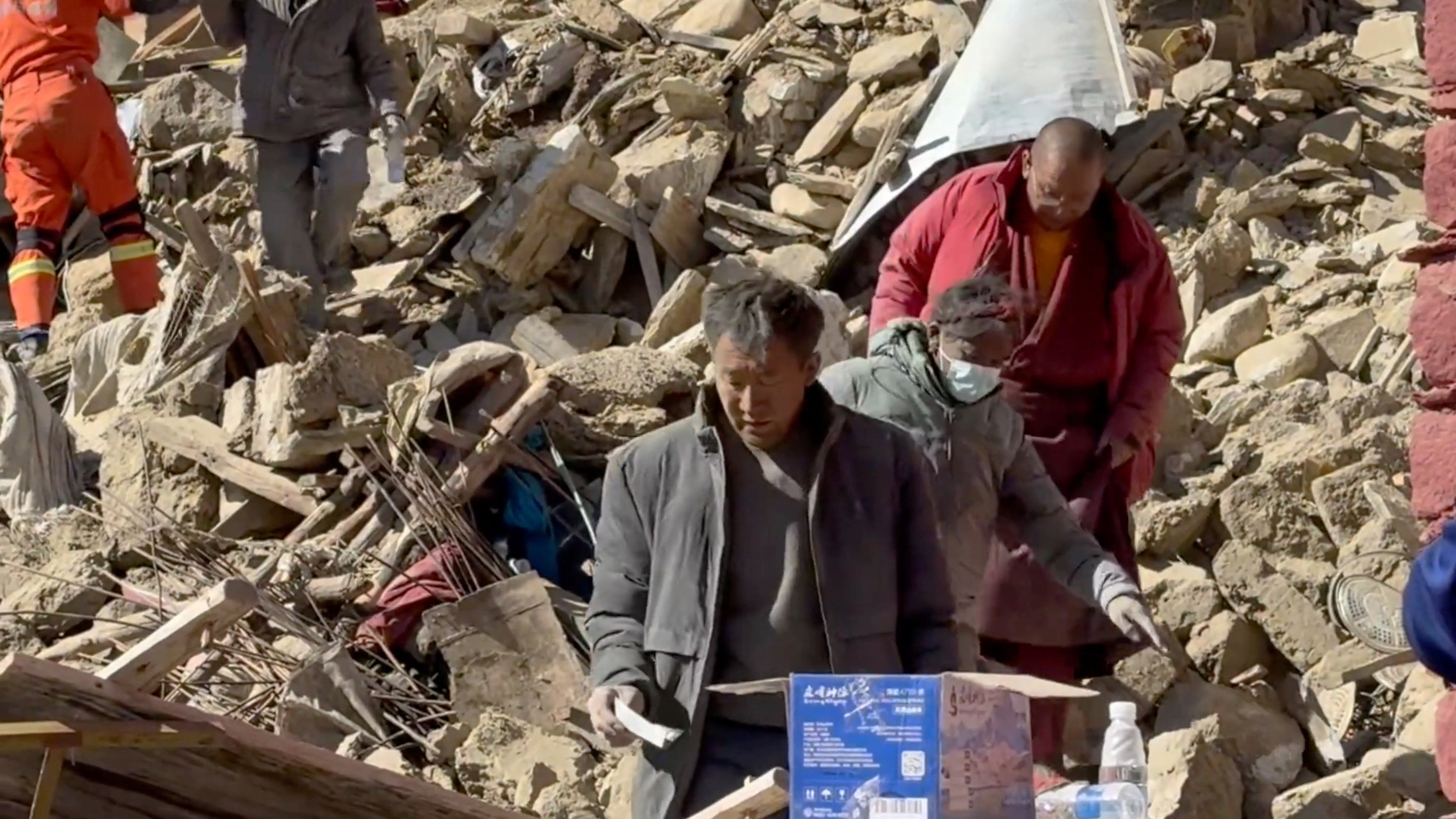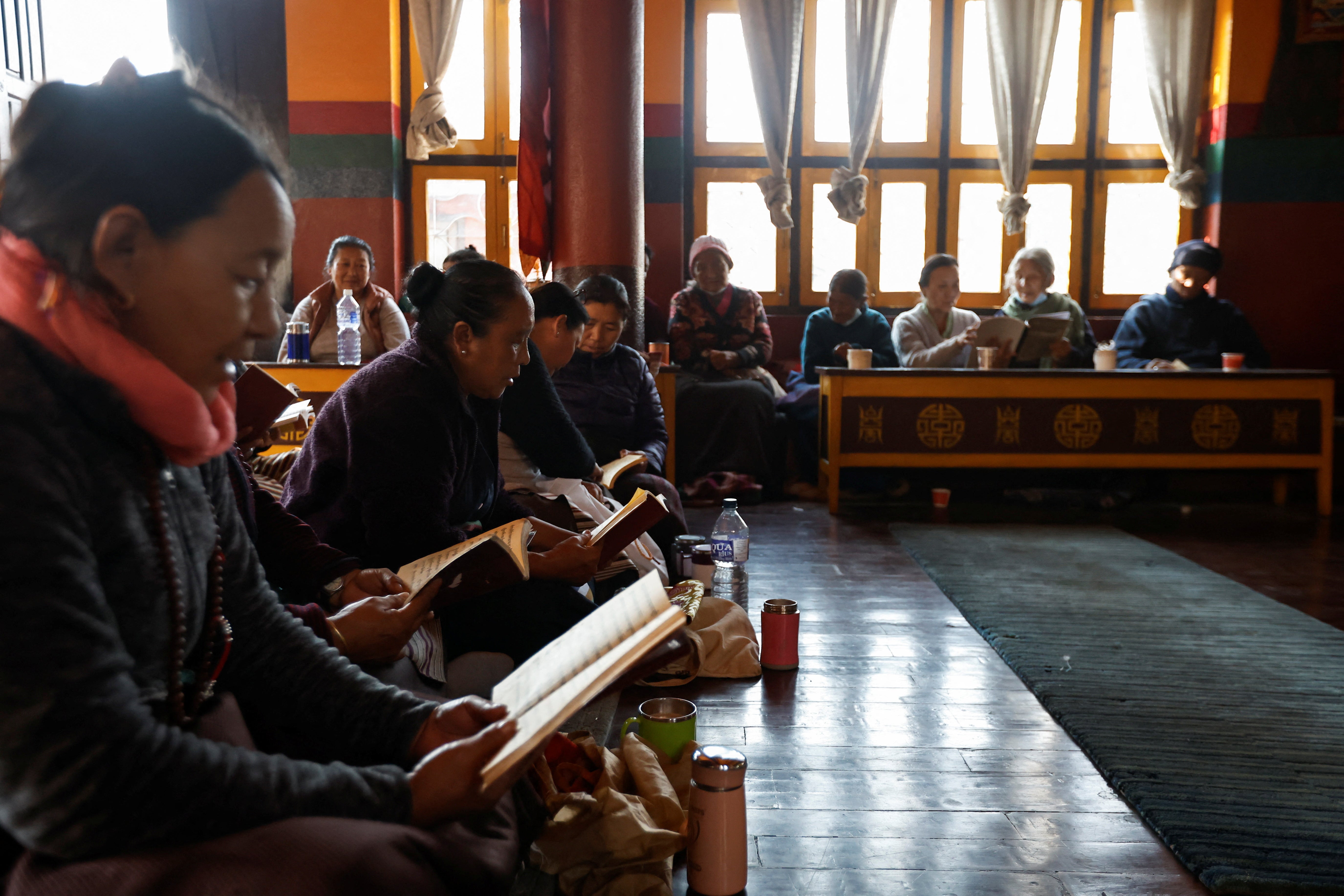Thousands moved to shelters in earthquake-hit Tibet as search for missing continues
About 1,000 of the earthquake-proof and heated houses are being sent to Tingri and can be erected in about 10 minutes, reports say
Your support helps us to tell the story
From reproductive rights to climate change to Big Tech, The Independent is on the ground when the story is developing. Whether it's investigating the financials of Elon Musk's pro-Trump PAC or producing our latest documentary, 'The A Word', which shines a light on the American women fighting for reproductive rights, we know how important it is to parse out the facts from the messaging.
At such a critical moment in US history, we need reporters on the ground. Your donation allows us to keep sending journalists to speak to both sides of the story.
The Independent is trusted by Americans across the entire political spectrum. And unlike many other quality news outlets, we choose not to lock Americans out of our reporting and analysis with paywalls. We believe quality journalism should be available to everyone, paid for by those who can afford it.
Your support makes all the difference.More than 45,000 people in earthquake-hit Tibet were moved to shelters as authorities widened search operations to find survivors buried under rubble in the high-altitude environment following a powerful earthquake.
At least 126 people were killed and more than 188 others sustained injuries after a 7.1 magnitude earthquake struck Tingri, a rural region with a population of about 60,000 people around 80km north of Mount Everest on Tuesday.
The temblor shook buildings as far away as Nepal and parts of India and Bhutan and destroyed more than 3,600 houses around Tingri, presenting a formidable task to rescuers in an area where the average elevation is more than 4,000m.

Experts say those trapped under the rubble about 48 hours after the quake likely have succumbed to hypothermia, with temperatures dropping as low as minus -18C at night. Power and water remain cut off due to the disaster.
Rescue operations have focused on 27 villages within a 20-km radius of Tingri, according to state-run news agency Xinhua. The area is home to 7,000 people.
“The first round of full-scale search and rescue work has concluded,” official Hao Tao, told a press conference on Thursday. “Next, we will carry out large-scale search and rescue in depth and detail.”
Officials were still assessing the scope of the disaster, which damaged four reservoirs, as well as the scale of losses, he added.
Mainland China sent 11,000 rescuers to the quake zone within hours of the first tremors, which were followed by more than 1,200 aftershocks.
Around 46,500 people affected by the earthquake have been transferred to 187 resettlement sites in towns surrounding the epicentre, state media reported. Rescue personnel have begun erecting prefabricated houses to replace the tents for the displaced.

About 1,000 of the earthquake-proof and heated houses are being sent to Tingri and can be erected in about 10 minutes, according to reports. Tents, quilts, stoves and other relief items were being delivered to people whose homes were uninhabitable or unsafe.
State broadcaster CCTV aired video showing workers erecting rows of tents with metal frames and stakes to house survivors. The tents were lined with quilted padding to hold back the cold.
Chinese vice premier Zhang Guoqing, who visited survivors, called for the acceleration of post-disaster reconstruction to ensure they can be safe and warm this winter.
Tributes poured in from Tibet and Nepal for those killed.

Tibetans, many of whom have fled persecution in China, held vigils for the victims in neighboring India and Nepal, both of which have sizeable communities.
About 200 Tibetans lit candles and marched on the two main streets of Dharamshala in north India, chanting prayers and carrying signs saying they stand with the victims and calling for aid to help them.
In the Nepalese capital Kathmandu, about 50 Tibetans chanted prayers at a Buddhist monastery. “We are praying for the souls of the many people who lost their lives in Tibet because of the earthquake yesterday,” Riya Tamang, who runs a shop, told the Associated Press.
An announcement on the Dalai Lama’s website said he would lead a prayer ceremony in memory of the victims on Thursday in Dharamshala.
“We are very clear about the separatist nature and political schemes of the Dalai Lama and remain highly vigilant,” Chinese foreign ministry spokesperson Guo Jiakun told reporters.
It was the worst earthquake in China since a 6.2-magnitude quake in 2023 killed at least 149 people in a remote northwestern region of the country.
In 2008, an 8-magnitude earthquake hit Sichuan’s Chengdu, claiming the lives of at least 70,000 people, the deadliest quake to hit China since the 1976 Tangshan quake had killed at least 242,000 people.
Additional reporting by agencies.

Join our commenting forum
Join thought-provoking conversations, follow other Independent readers and see their replies
Comments